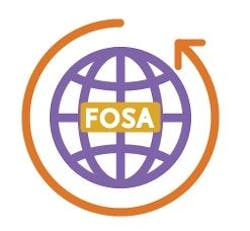Fiber Optic Sensing Association’s Technology Committee addresses installation considerations
The Fiber Optic Sensing Association (FOSA) recently created a Technology Committee, which includes 13 expert members. “As an initial activity, the committee will address fiber sensing installation considerations at a high level,” the association said when announcing the committee’s formation on June 29.
Technology Committee members are: Chris Minto, OptaSense (committee chair); Mike Hines, OFS (board liaison); Dana Dutoit, AFL; Brian Borkowski, Asymmetric Technologies; Michelle Engarto, Corning; Kelvin Self, Ditch Witch; Scott Gardner, Dura-Line; George Palmer, Fotech Solutions; Fabian Kleinpotzl, Frauscher Sensor Technology USA; Wieland Hill, LIOS Technology; Etienne Rochat, Omnisens; Gordon Youle, OZ Optics; Paul Baird, Prysmian Group.
Technology Committee chair Chris Minto is a PhD physicist with more than 20 years’ experience in acoustic sensing. He has overseen product development and deployment for OptaSense since the company’s founding in 2008.
“It will be an honor to chair a committee of such distinguished industry experts,” Minto said. “Our goal will be to enhance the understanding and utilization of fiber-optic sensing in the real world through, for example, common installation considerations for engineering and construction firms starting the deployment process.”
Hines is OFS’s market manager for industrial sensing. “This committee represents some of the world’s greatest expertise in fiber-optic sensing for protection of pipelines, power lines, railways, international borders, smart roads, and critical facilities,” he said. “Their insights will be invaluable as FOSA educates industry, government and the public on the benefits of fiber-optic sensing.”
FOSA is a not-for-profit organization that describes itself as being dedicated to accelerating the use of distributed and quasi-distributed fiber-optic sensing. The association points out, “Fiber-optic sensing uses laser interrogation of fiber-optic cable to remotely and instantaneously detect pipeline leaks, vehicle traffic, human traffic, digging activity, seismic activity, unsafe temperatures, loss of structural integrity, and other conditions and activities.”
